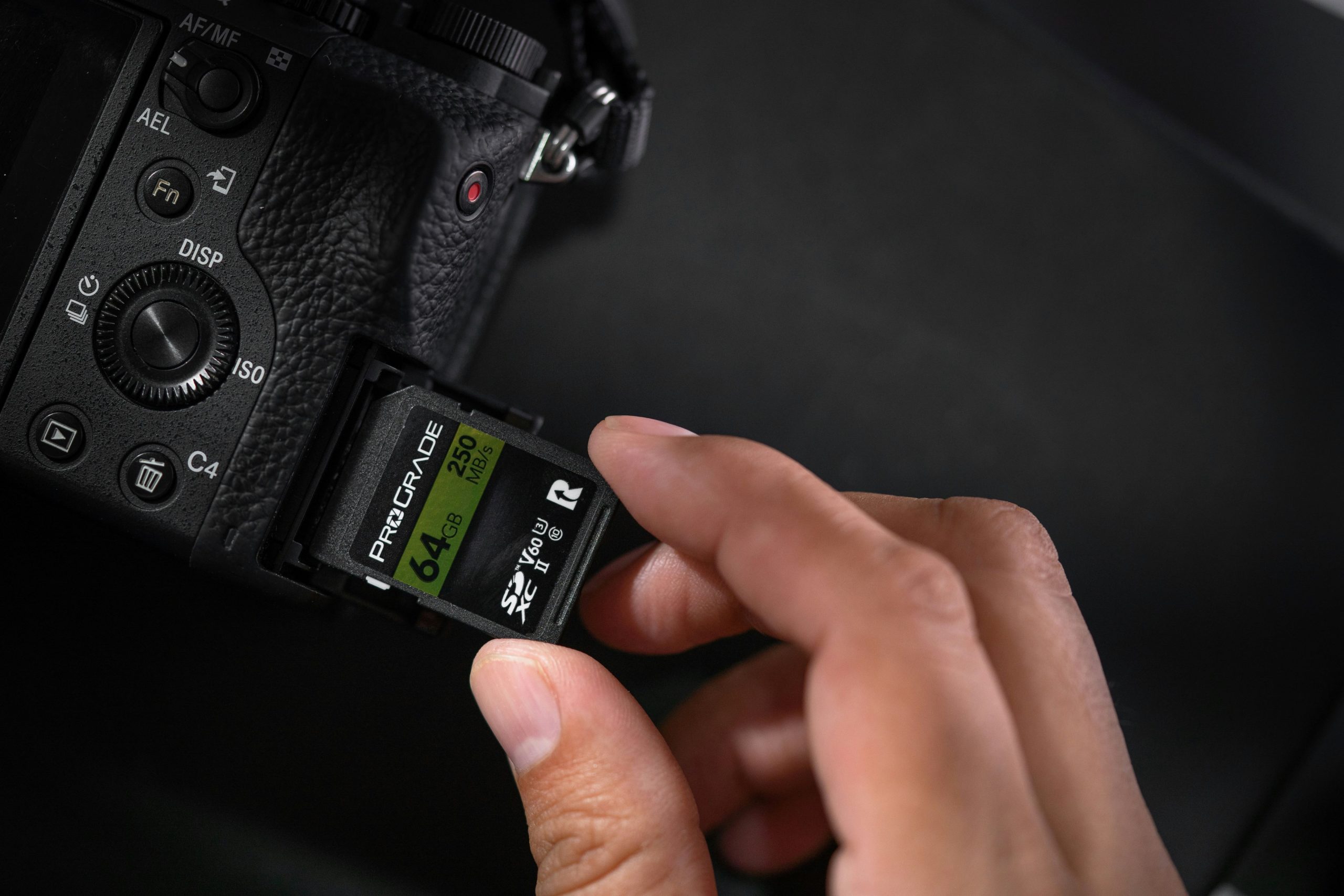In an age where our digital lives are overflowing with photos, videos, and apps, the need for reliable storage solutions has never been more crucial. Picture this: you’re on vacation, capturing breathtaking sunsets and unforgettable moments only to discover that your device’s memory is full. This is where TF cards and SD cards swoop in like unsung heroes of the tech world. While they may look similar at first glance, these small yet powerful storage mediums offer different benefits tailored to various devices and needs.
Whether you’re a photography enthusiast looking to expand your camera’s memory or a mobile gamer eager to store the latest hits without sacrificing speed or performance, understanding the nuances between TF cards (also known as microSD) and SD cards can be a game changer. In this article, we’ll dive into what exactly these cards are, how they function within our gadgets, and which one might be the perfect fit for your storage challenges. Prepare to unlock the mysteries of these compact powerhouses that keep our digital experiences seamless!
What is a TF Card?
A TF card, or TransFlash card, is a type of memory card that has been embraced for its compact size and versatility in portable devices. Originally developed by SanDisk in 2004, it was designed to meet the demands of mobile phones and other small gadgets needing efficient storage solutions. While often overshadowed by its more recognized counterpart, the SD card, the TF card plays a crucial role in various applications such as cameras, game consoles, and even Raspberry Pi projects where space is at a premium.
One fascinating aspect of TF cards is their compatibility with adapters that allow them to be used in standard SD slots. This adaptability not only extends their functionality but also underscores their importance in an ecosystem increasingly reliant on miniaturization without compromising performance. As we advance into higher resolutions and increased data needs—think 4K video or extensive gaming libraries—the relevance of TF cards continues to grow, challenging perceptions as merely “smartphone storage.” In a world where every ounce counts towards speed and efficiency, the humble TF card stands out as an unsung hero navigating seamlessly through the digital landscape.

History of TF Cards
The history of TF cards, or TransFlash cards, is a compelling tale of innovation in the world of portable storage. Introduced by SanDisk in 2004, the TF card was originally designed for mobile phones as a compact and efficient way to expand storage capacity. Its diminutive size—measuring just 15mm x 11mm x 1mm—marked a significant advancement over traditional SD cards, making it particularly appealing at a time when smartphone use was on the rise. In fact, the very term TransFlash itself underscored its role in transforming how data could be stored and shared on-the-go.
In 2005, to enhance compatibility with other devices and establish broader industry standards, TransFlash evolved into microSD—a format that quickly became ubiquitous across various electronic devices beyond phones. This transition not only cemented its place in consumer electronics but also inspired manufacturers to create higher-capacity variants such as microSDHC and microSDXC. Today’s users benefit from these advancements: TF/microSD cards can hold vast amounts of data—up to several terabytes—and offer speeds that facilitate rapid file transfers necessary for high-resolution video recordings or demanding applications. Thus, what started as a simple solution for mobile storage has woven itself into the very fabric of digital life as we know it today.
What is an SD Card?
An SD card, or Secure Digital card, is a compact and portable storage device that has revolutionized how we manage digital data. Originally designed for devices like cameras and handheld devices, today’s SD cards hold vast amounts of information in a tiny package, often fitting seamlessly into smartphones, drones, tablets, and even laptops. With their ability to store everything from high-resolution photos to extensive video libraries, SD cards have become indispensable for content creators and casual users alike.
One of the captivating aspects of SD cards is their evolution over time. From the original SDSC (Standard Capacity) holding just 2GB to the newer versions like SDXC (Extended Capacity) capable of storing up to 2TB or more, these small storage solutions are designed to meet our ever-growing appetite for digital space. Moreover, features such as faster read/write speeds with UHS (Ultra High Speed) ratings enhance performance significantly—important for tasks requiring quick data retrieval and storage. As cloud storage options gain popularity, physical media like SD cards offer reliability and instant access without needing an internet connection—a crucial advantage when working in remote areas or on-the-go.

Differences Between TF and SD Cards
When diving into the world of memory cards, it’s crucial to recognize that while TF (TransFlash) cards and SD (Secure Digital) cards appear similar at first glance, they serve different niches and have distinct characteristics. The TF card was originally developed by SanDisk as a smaller alternative to the SD card, measuring just 15mm x 11mm, making it ideal for devices with space constraints like smartphones and tablets. Meanwhile, SD cards come in three sizes—Standard, Mini, and Micro—catering to a broader range of devices from cameras to gaming consoles.
Another key difference lies in their compatibility and usage. While microSD is a format derived from TF cards—the two terms are often used interchangeably—a dedicated SD card format supports higher capacities and speeds. This difference is essential for users looking for enhanced performance; many modern cameras favor the faster data transfer rates offered by high-capacity SD cards over standard microSD models. Additionally, the classification of both types into various speed classes can further influence which card you choose based on your device’s requirements or your specific storage needs when tackling tasks like video recording or high-resolution photography. Ultimately, understanding these nuances can significantly impact your experience as you select the right storage solution tailored to your technology ecosystem.
Common Uses for TF and SD Cards
TF (TransFlash) and SD (Secure Digital) cards serve pivotal roles in today’s digital landscape, offering versatile storage solutions that cater to a plethora of devices. One common use for these memory cards is in smartphones. With apps, photos, and videos consuming more storage than ever, TF cards provide an excellent way to expand a device’s capacity without needing to invest in high-end models with larger built-in memory. Their small size doesn’t compromise performance; modern TF and SD cards boast impressive read/write speeds that enhance multitasking and media consumption experiences.
In addition to mobile devices, these cards are essential in the world of photography. Camera enthusiasts often prefer using SD or TF cards for their ability to handle 4K video recording and burst shooting modes while ensuring quick data transfer rates. Beyond just cameras, they are increasingly found in drones and action cameras, providing reliable storage for stunning aerial shots or thrilling adventurer videos. Furthermore, as smart home technology thrives, devices like security cameras leverage microSD support to capture continuous footage seamlessly—an example of how these compact powerhouses integrate into our daily routines while facilitating exceptional user experiences across diverse platforms.

Compatibility Issues with Devices
When diving into the world of TF and SD cards, one cannot overlook the often frustrating compatibility issues that can arise with various devices. While both formats serve similar purposes in expanding storage capacities, not every device is equipped to recognize them seamlessly. For instance, many smartphones support microSD cards but may have specific limitations regarding capacity or speed class. This means that while you might pick up a high-capacity TF card, your camera could only read smaller versions, leaving you grappling with unexpected challenges during critical moments.
Moreover, it’s essential to consider the formatting of these cards as another layer of complexity. Different operating systems might require unique file systems such as FAT32 or exFAT for proper functionality. If a TF card formatted for Android is inserted into a DSLR camera without reformatting it first, data corruption and loss could occur. Therefore, always checking device specifications before making a purchase can save users from potential headaches down the line—after all, there’s nothing more disheartening than realizing your brand-new card doesn’t work with your beloved gadget!
Conclusion: Choosing the Best Storage Option
When it comes to choosing between a TF card and an SD card, understanding your specific needs is crucial. For users who prioritize portability and are often on the move, TF cards present a compelling option due to their compact size and versatility. Conversely, if you require greater storage capacity for tasks such as video recording or extensive data storage, SD cards typically offer larger formats that can hold more information without sacrificing performance.
Beyond mere specifications, consider the ecosystem of devices you’ll be using with these storage solutions. While many modern devices seamlessly support both types of cards through adapters or built-in slots, certain cameras and professional equipment may favor one over the other for optimal functionality. Ultimately, selecting the best storage option requires a careful evaluation of usage scenarios—whether you’re a casual user taking snapshots or a content creator needing fast read/write speeds for high-definition footage—ensuring that your chosen card enhances rather than hinders your digital experience.